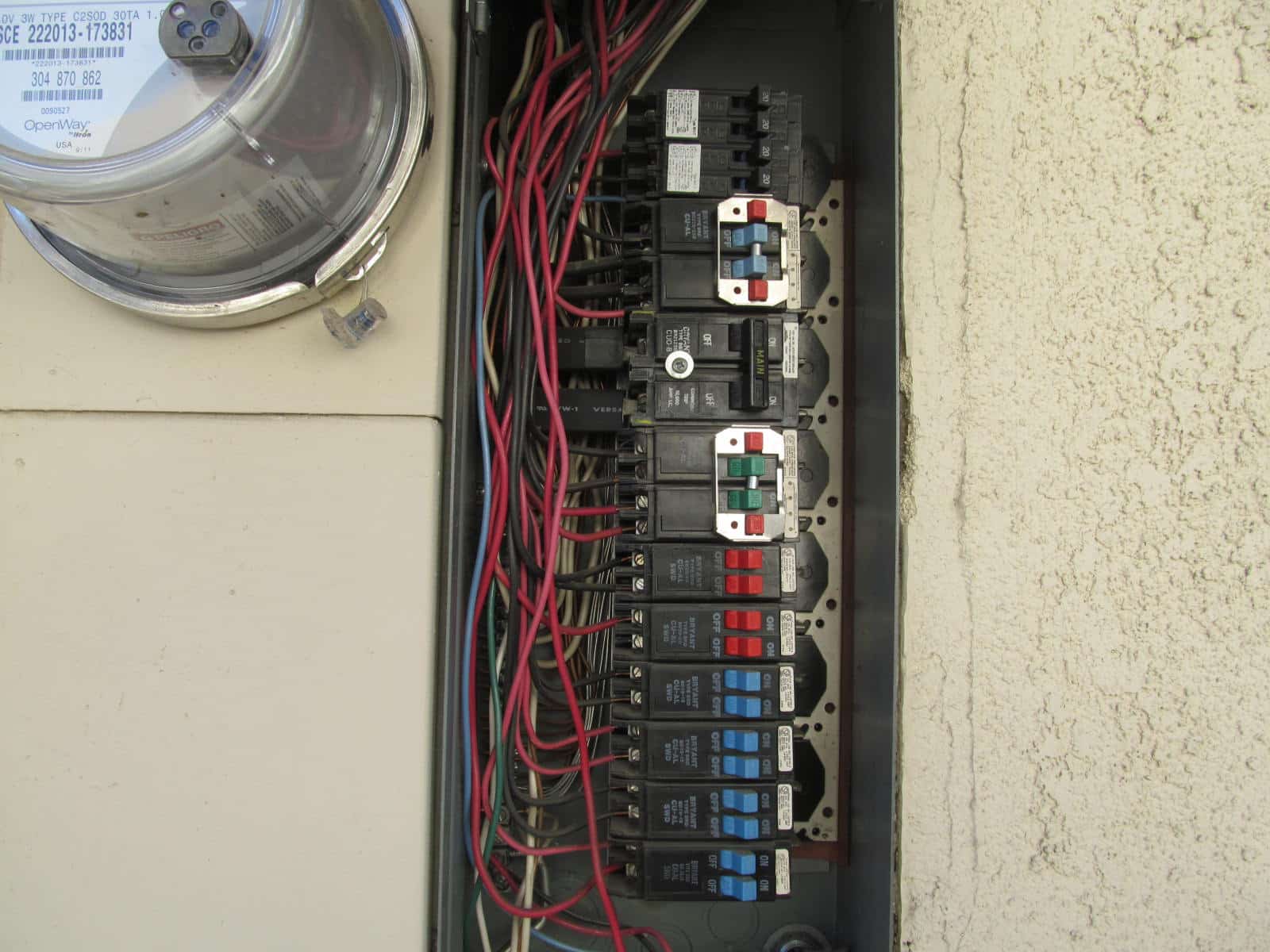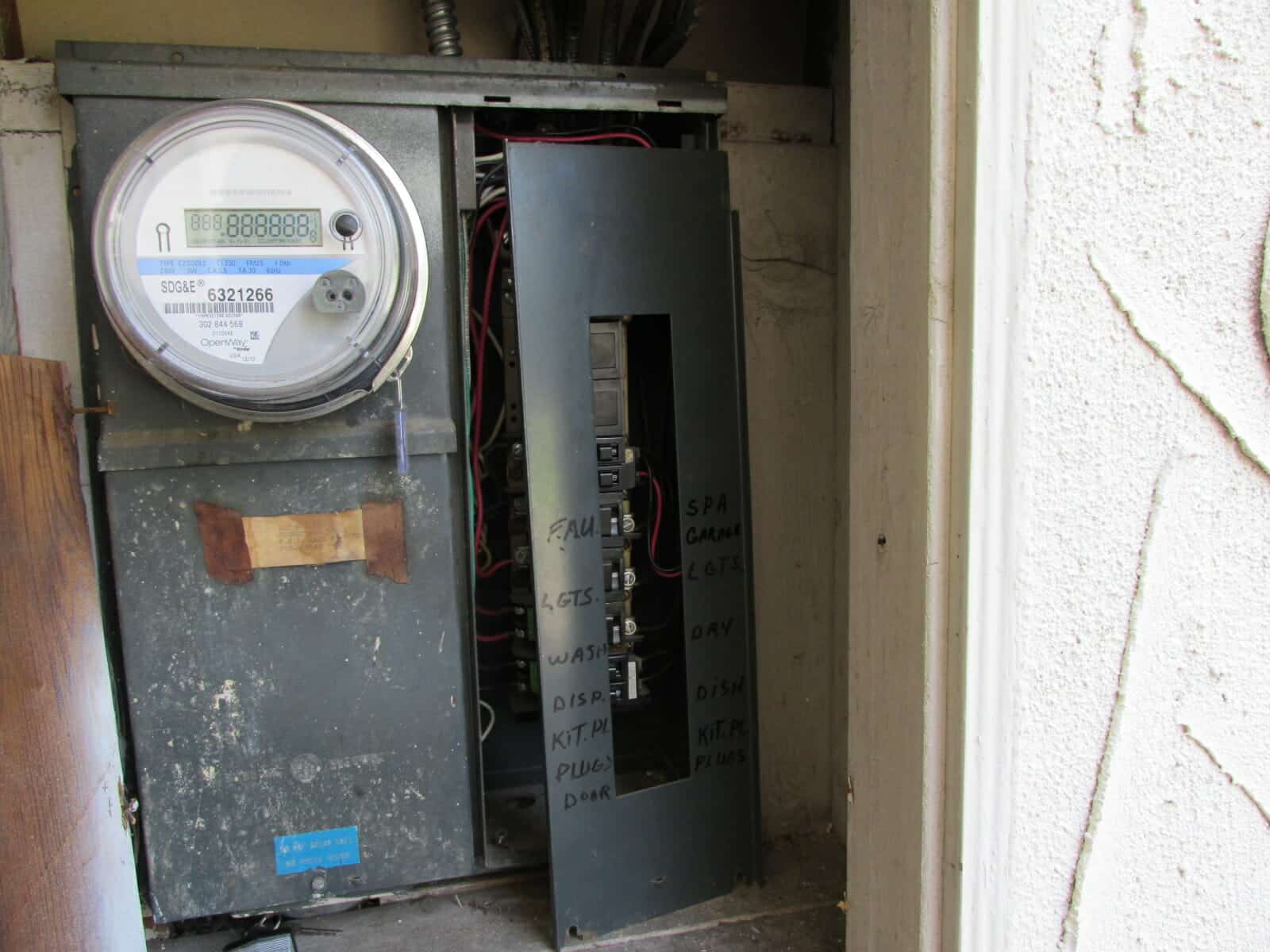Missing "Dead Front" Covers on Electrical Panels is Serious


David Jones
Senior Contributor
David Jones is a seasoned home inspector and construction expert with over 20 years of experience. He specializes in structural integrity, foundation issues, and detailed home safety assessments.
View Full Profile →
Dead front covers, which are solid covers placed on the front of electrical panels without any exposed electrical parts, are a vital safety feature in electrical installations. Their significance can be expounded upon several pivotal facets:
Protection Against Accidental Contact: One of the primary purposes of dead front covers is to safeguard against inadvertent contact with live electrical components. It’s quite easy, especially for someone unfamiliar with the interior workings of electrical panels, to accidentally touch a live part, resulting in electric shock or electrocution. The dead front cover serves as a barrier that prevents any unintentional contact with these live parts, even if the main panel cover is opened.
Prevention of Arc Faults: In environments where there are multiple wires and electrical components, there’s a risk of arc faults. An arc fault can occur when an electrical current strays from its intended path and travels through the air from one conductor to another or to the ground. This can result in intense heat, leading to fires. By sealing off conductors behind a dead front cover, the chances of stray conductors or metallic tools accidentally creating a short circuit and resulting in an arc fault are greatly diminished.
Aesthetic and Organizational Value: While the primary functions of dead front covers are safety-oriented, they also offer a cleaner, more organized appearance. By covering up all the internal wiring and components, the electrical panel has a more professional and neat appearance. This is especially important in settings where the panels might be visible to the general public or in residential spaces.
Informational and Instructional Utility: Often, dead front covers come with labels and other important information about the circuits and their respective switches or breakers. This labeling is crucial for both professionals and laypersons, as it aids in understanding the setup, ensuring proper operation, and facilitating safer maintenance or troubleshooting.
Protection Against Environmental Factors: Electrical panels can be susceptible to environmental contaminants like dust, moisture, other particles, and pests such as bugs and mice. Over time, these contaminants can compromise the integrity of the electrical connections or cause premature wear. Dead front covers add an extra layer of protection, ensuring the longevity of the components inside the panel.
In conclusion, dead front covers are more than just a cosmetic or supplementary feature on electrical panels. They are a fundamental safety component that protects both the electrical system and the people who might interact with or be near it. Their role in preventing accidents, fires, and other hazards makes them indispensable in any electrical installation.
Replacing the “Dead Front”
When the “Dead Front” is missing it is wise to replace it as soon as possible. Also, the main cover should be locked and tagged until the Dead Front is properly in place. A number of manufactures have replacement covers for their panels.


Why are they called “Dead Front” Covers?
The terminology “dead front” in the context of an electrical panel cover conveys the idea that there are no exposed live parts when the cover is in place. The word “dead” in electrical parlance often refers to a circuit, component, or device that is not energized or not carrying current. So, a “dead front” implies that the front of the panel, when the cover is installed, presents no direct points of electrical contact or exposure. Here’s a deeper dive into the terminology:
-
Safety Implication: By design, a dead front cover ensures that all the live, energized parts are shielded from direct contact. Thus, even if someone were to touch the cover or open the outer panel, they wouldn’t be exposed to live electrical components, making the front essentially “dead” in terms of electrical risk.
-
Historical Context: Over the decades, as electrical systems became more widespread and standardized, there was an increasing need for consistent safety measures. The term “dead front” likely emerged from this evolutionary safety process as a way to quickly communicate the safe nature of the cover. It reinforces the idea that the front is devoid of any “live” or “hot” elements that can pose a danger.
-
Contrast with “Live Front”: In some contexts, there might be “live front” equipment, where the live parts can be accessed directly without removing any cover or panel. By differentiating “dead front” from “live front”, it’s clear which equipment poses an immediate risk when interacted with and which does not.
-
Convenience in Communication: Using terms like “dead front” in the industry provides clarity. When an electrician or technician refers to a “dead front” panel, others immediately understand that the panel is designed for safety with no exposed live parts at the front.
In essence, the term “dead front” encapsulates both a description and a safety assurance. By labeling a cover or panel with this term, it conveys a clear message about the protective nature of the design.
Panels with a “Dead Front” cover may have missing twist outs
Dead front covers have rectangular shaped slots that breakers fit into. If the cover has slots that are open but no breaker in it then pests may enter the panel, or children or others may inadvertently stick a metallic item in the open space. If there are a number of slots open next to one another and a person accidentally sticks a finger or hand into the open space, then shock or even death may occur. Twist outs can be installed to prevent this hazard.
Who to consult?
Owners may put on a “dead front” cover if there is the proper one laying about; however, they should be very careful for safety sake when doing so. Electricians and qualified handymen are normally very good at doing this task. Note at times, the proper cover may need to be ordered from the manufacturer.